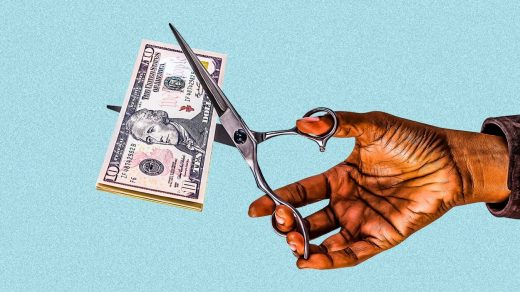Why you’re getting a pay cut this year
Prices keep going up, despite several significant interest rate hikes by the Federal Reserve over the past several months—and it’s cutting into Americans’ paychecks. The latest Consumer Price Index data, released today by the Bureau of Labor Statistics, showed that prices rose 8.2% year-over-year, and 0.4% month-over-month. Further, the “core CPI” (excluding food and energy costs, which tend to be volatile) increased 6.6% year-over-year and 0.6% month-over-month, the highest in 40 years.
The higher cost of living has effectively stripped away any gains employees have made in wages. September’s Real Earnings Summary (also released Thursday), reported that real wages fell 0.1% month-over-month, and are down 3% year-over-year with inflation factored in. It’s the essentials, too, that have seen considerable cost increases:
While gas prices have come down a bit since peaking earlier this year, increases in food and shelter prices have partially offset any ground employees may have made up in their budgets. Costs for medical care, new vehicles, home furnishings, and other categories were also up this month, too. Earlier today, the Social Security Administration announced that Social Security beneficiaries will see an 8.7% benefit increase starting in January to help offset inflation over the past year.
There may be, however, some further softening in prices that have yet to show up in the CPI’s data, too, such as a drop in median monthly rent to $1,759, which peaked in July, according to data from Realtor.com. Food prices may be edging down worldwide, too, as the FAO Food Price Index from the United Nations has fallen over the summer. In many respects, too, workers hold an advantage in the labor market as businesses are still looking for employees. The latest Job Openings and Labor Turnover Survey (JOLTS), comprising data for August, showed that there were 10.1 million available jobs at the beginning of September—a sign that employees still have some leverage to fight for higher wages.
The tables could be turning, though. Through the summer, several large companies in numerous sectors have already started cutting jobs in preparation for a possible (or probable) recession, which could put many workers in an even tighter spot if job openings dry up.
As it comes to the latest CPI numbers, though, the data is likely a deflating sign for the Fed and policymakers, who have taken aim at rising prices by instituting a series of 75 basis point interest rate hikes in an attempt to curb demand. The markets have reacted poorly to the recent CPI reports, and today was no different. Surprisingly, though, the S&P 500 fell briefly in the morning before rebounding for a near 2% gain by roughly 1 p.m. ET.
Finally, while the latest numbers show that the rate of inflation is slowing down (it was 8.3% last month), it’s seemingly not been enough. It’s still within the realm of possibility that the Fed could institute a 100 basis point rate increase this month, which would put more pressure on an already-shaky economy.
(16)



